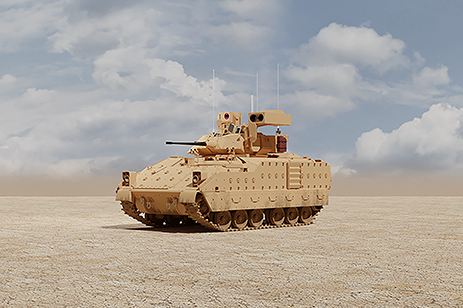
Historically, adding or enhancing command, control, communications, computers, intelligence, surveillance and reconnaissance (C4ISR) functionality in tactical ground vehicles has been a challenge. While advancements in technology have done much to improve vehicles capability in the field, such upgrades have typically burdened vehicles with cumbersome bolt-on electronics equipped with proprietary, stove-piped communication interfaces and numerous independent Global Positioning System (GPS) and Human Machine Interface (HMI) peripheral devices.
As a result, modernizing ground vehicles to add new capabilities or feature the latest technology is unnecessarily complex. Upgrading technology with proprietary interfaces entails a costly and complicated migration process. As well, the lack of interoperability between in-vehicle systems results in redundant equipment, consuming excess power and taking up valuable real estate in an already constrained space that must accommodate people, ammunition and supplies. In this cramped environment, manually enabling communication between systems creates additional work for vehicle operators. Ultimately, these factors combine to create a poor, unsafe in-vehicle experience for warfighters, with reduced reliability and an increased chance of mission failure.
Fortunately, modern efforts like the U.S. Army's VICTORY (Vehicle Integration for C4ISR/EW Interoperability) initiative and the United Kingdom's Ministry of Defence (MOD) Generic Vehicle Architecture (GVA) are paving the way for a modern battlefield where system upgrades and modifications are quicker and less expensive.
Login and download the white paper to learn more:
- Similarities and differences between GVA and VICTORY
- Network integration evaluation and deployment
- Achieving GVA and VICTORY goals through COTS solutions